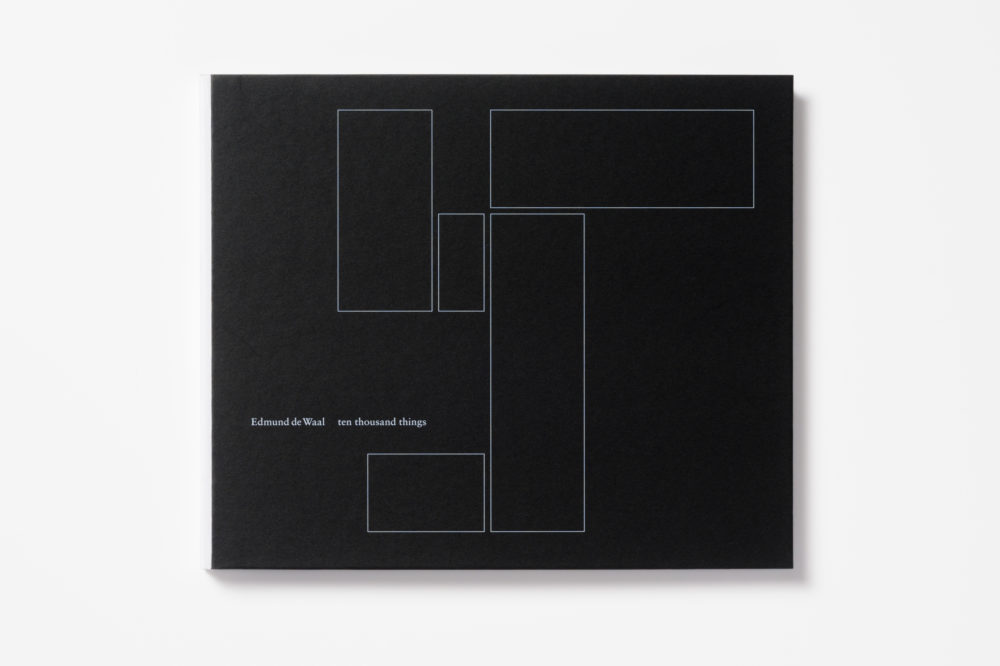bauspiel, 2014; a lecture on the weather, 2015; Lichtzwang, 2015; installation view
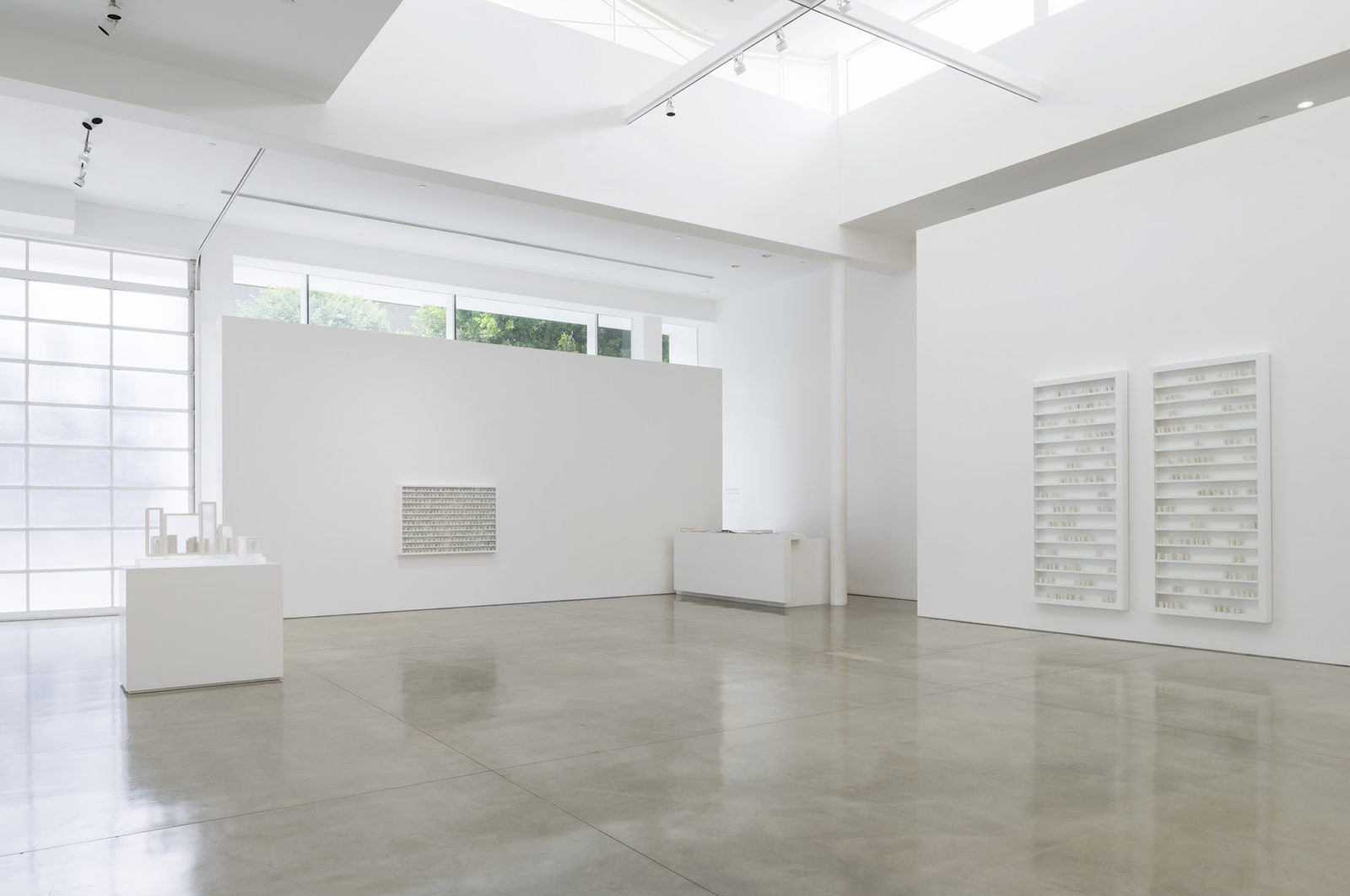
bauspiel, 2014; a lecture on the weather, 2015; Lichtzwang, 2015; installation view
ten thousand things
Gagosian, Beverly Hills
14 January – 18 February 2016
At the heart of this exhibition with Gagosian, Beverly Hills, was a series of responses to the Schindler House, the revolutionary 1922 building by Viennese émigré architect, Rudolph Schindler, which was so influential on composer, theorist and writer, John Cage.
For this body of work, Edmund de Waal made a series of conversations about materials - porcelain, metal, plaster, wood and glass - with architectural space and the open, generous possibilities that Cage and Schindler offer. How people walk through spaces, how they encounter the works, how it is possible to make work to pause the world a little, is the imperative. At its core is one simple question: it is about what it means to belong in one place at one time.
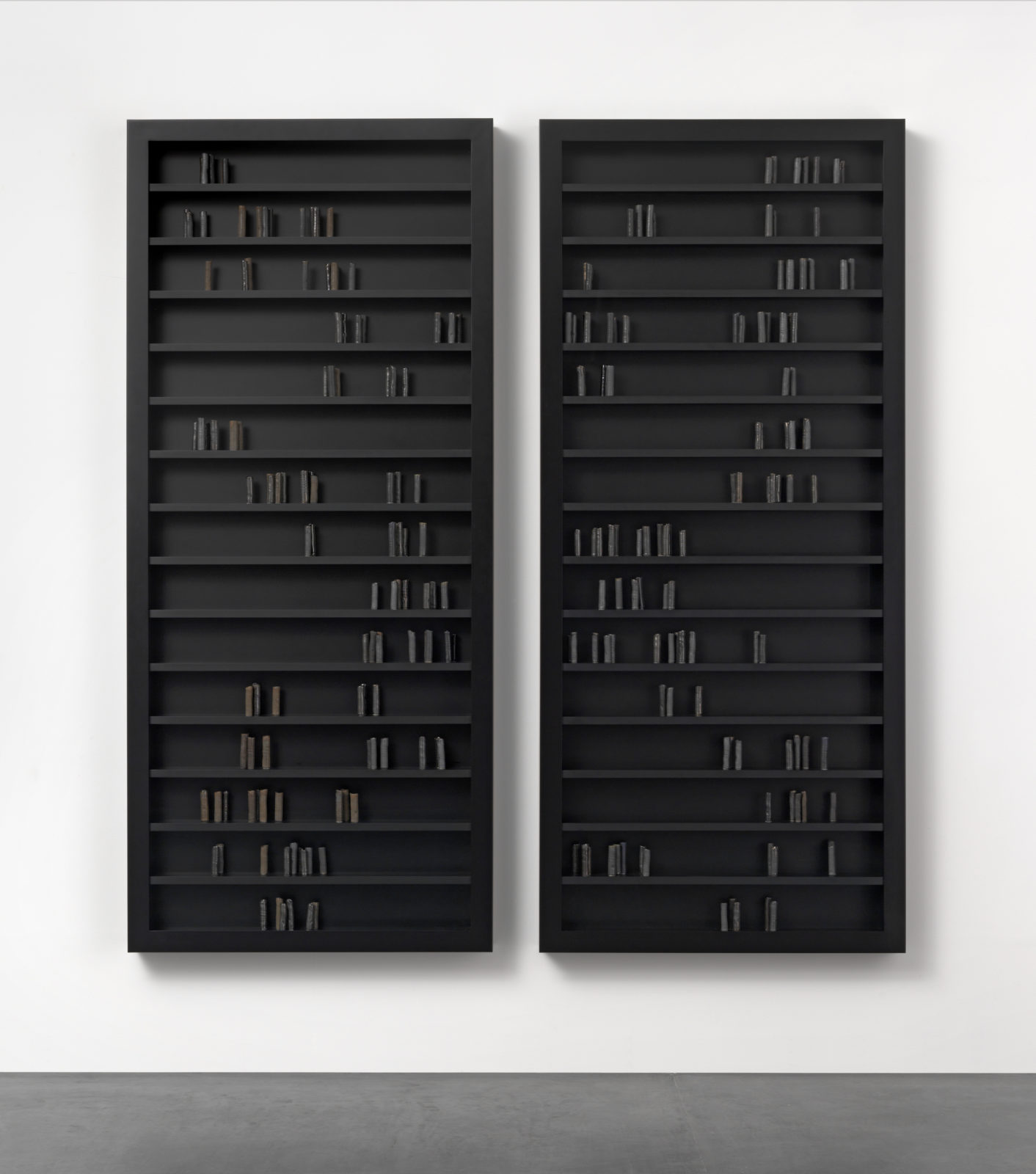
black milk2016
237 porcelain vessels in 2 wood, aluminium, and glass vitrines.
274.5 × 255 × 13.5 cm
ten thousand things
Gagosian, Beverly Hills
14 January – 18 February 2016
At the heart of this exhibition with Gagosian, Beverly Hills, was a series of responses to the Schindler House, the revolutionary 1922 building by Viennese émigré architect, Rudolph Schindler, which was so influential on composer, theorist and writer, John Cage.
For this body of work, Edmund de Waal made a series of conversations about materials - porcelain, metal, plaster, wood and glass - with architectural space and the open, generous possibilities that Cage and Schindler offer. How people walk through spaces, how they encounter the works, how it is possible to make work to pause the world a little, is the imperative. At its core is one simple question: it is about what it means to belong in one place at one time.
Lichtzwang, 2014; black milk, 2015; installation view

Lichtzwang, 2014; black milk, 2015; installation view
ten thousand things
Gagosian, Beverly Hills
14 January – 18 February 2016
At the heart of this exhibition with Gagosian, Beverly Hills, was a series of responses to the Schindler House, the revolutionary 1922 building by Viennese émigré architect, Rudolph Schindler, which was so influential on composer, theorist and writer, John Cage.
For this body of work, Edmund de Waal made a series of conversations about materials - porcelain, metal, plaster, wood and glass - with architectural space and the open, generous possibilities that Cage and Schindler offer. How people walk through spaces, how they encounter the works, how it is possible to make work to pause the world a little, is the imperative. At its core is one simple question: it is about what it means to belong in one place at one time.
a lecture on the weather, 2015
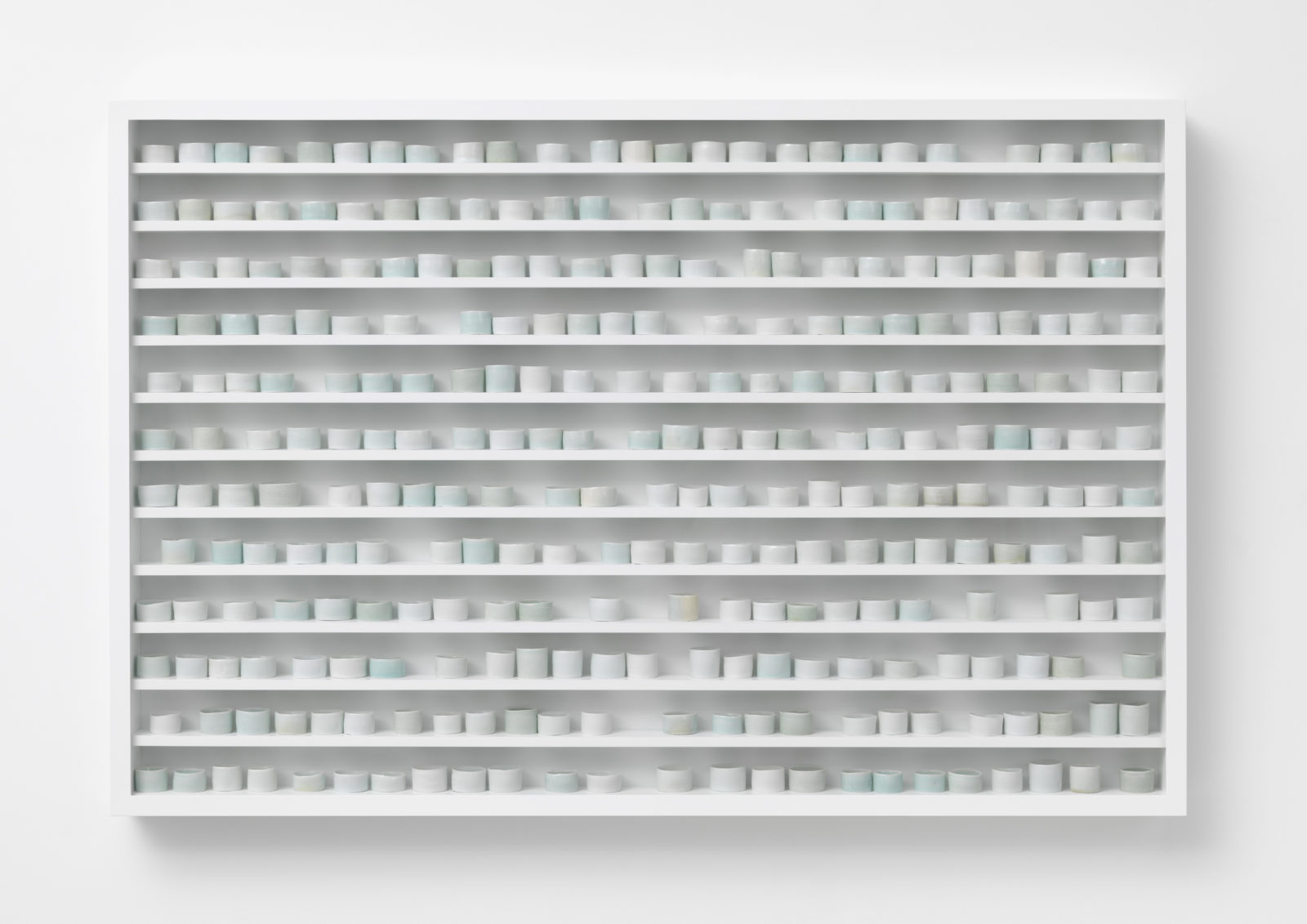
a lecture on the weather, 2015
290 porcelain vessels in wood, aluminium, and glass vitrine105.7 × 158.4 × 11 cm
ten thousand things
Gagosian, Beverly Hills
14 January – 18 February 2016
At the heart of this exhibition with Gagosian, Beverly Hills, was a series of responses to the Schindler House, the revolutionary 1922 building by Viennese émigré architect, Rudolph Schindler, which was so influential on composer, theorist and writer, John Cage.
For this body of work, Edmund de Waal made a series of conversations about materials - porcelain, metal, plaster, wood and glass - with architectural space and the open, generous possibilities that Cage and Schindler offer. How people walk through spaces, how they encounter the works, how it is possible to make work to pause the world a little, is the imperative. At its core is one simple question: it is about what it means to belong in one place at one time.
three sounds, 2015
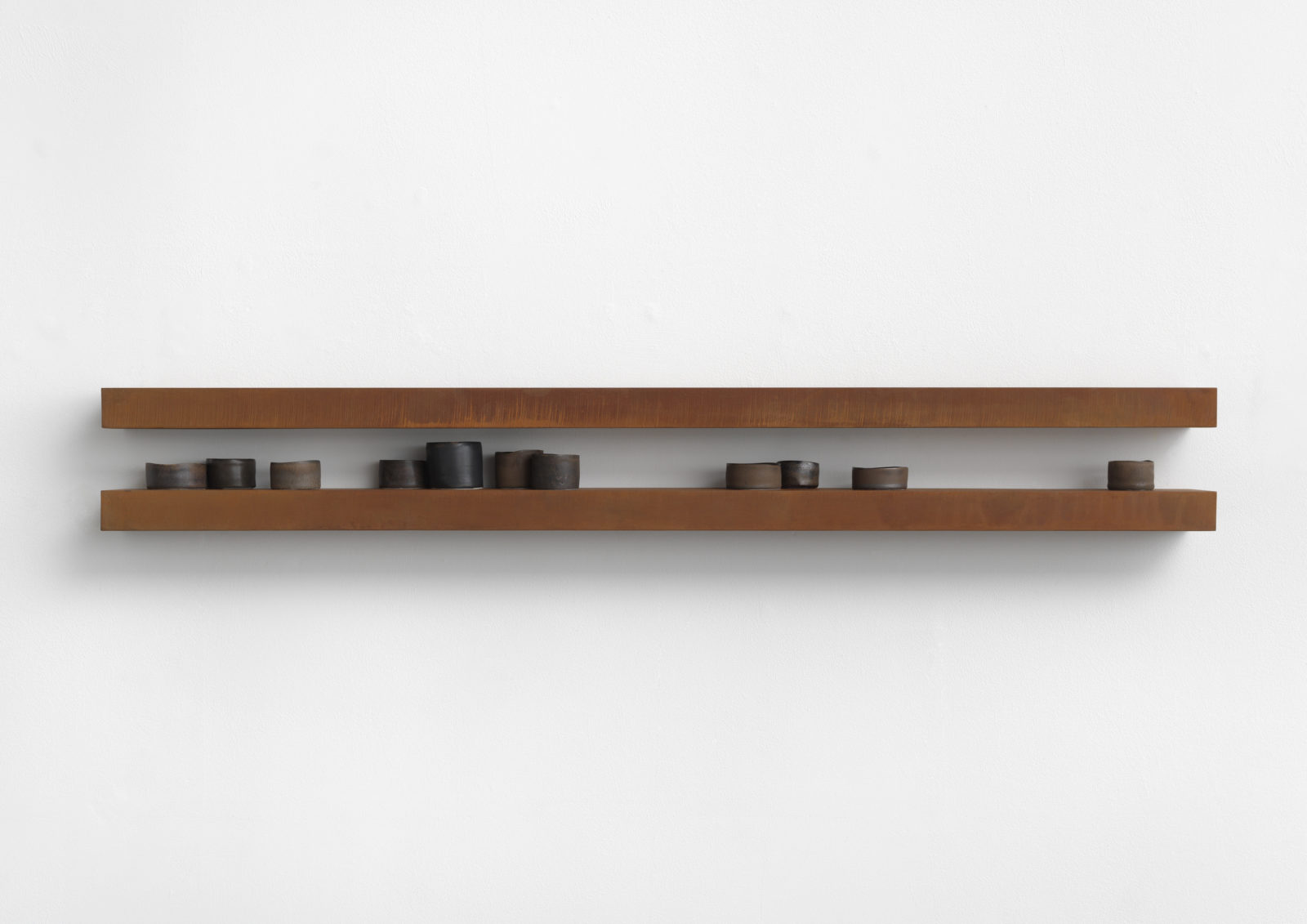
three sounds, 2015
11 porcelain vessels on 2 Cor-Ten steel shelves14 × 110 × 10 cm
ten thousand things
Gagosian, Beverly Hills
14 January – 18 February 2016
At the heart of this exhibition with Gagosian, Beverly Hills, was a series of responses to the Schindler House, the revolutionary 1922 building by Viennese émigré architect, Rudolph Schindler, which was so influential on composer, theorist and writer, John Cage.
For this body of work, Edmund de Waal made a series of conversations about materials - porcelain, metal, plaster, wood and glass - with architectural space and the open, generous possibilities that Cage and Schindler offer. How people walk through spaces, how they encounter the works, how it is possible to make work to pause the world a little, is the imperative. At its core is one simple question: it is about what it means to belong in one place at one time.
a new ground I-III, 2015
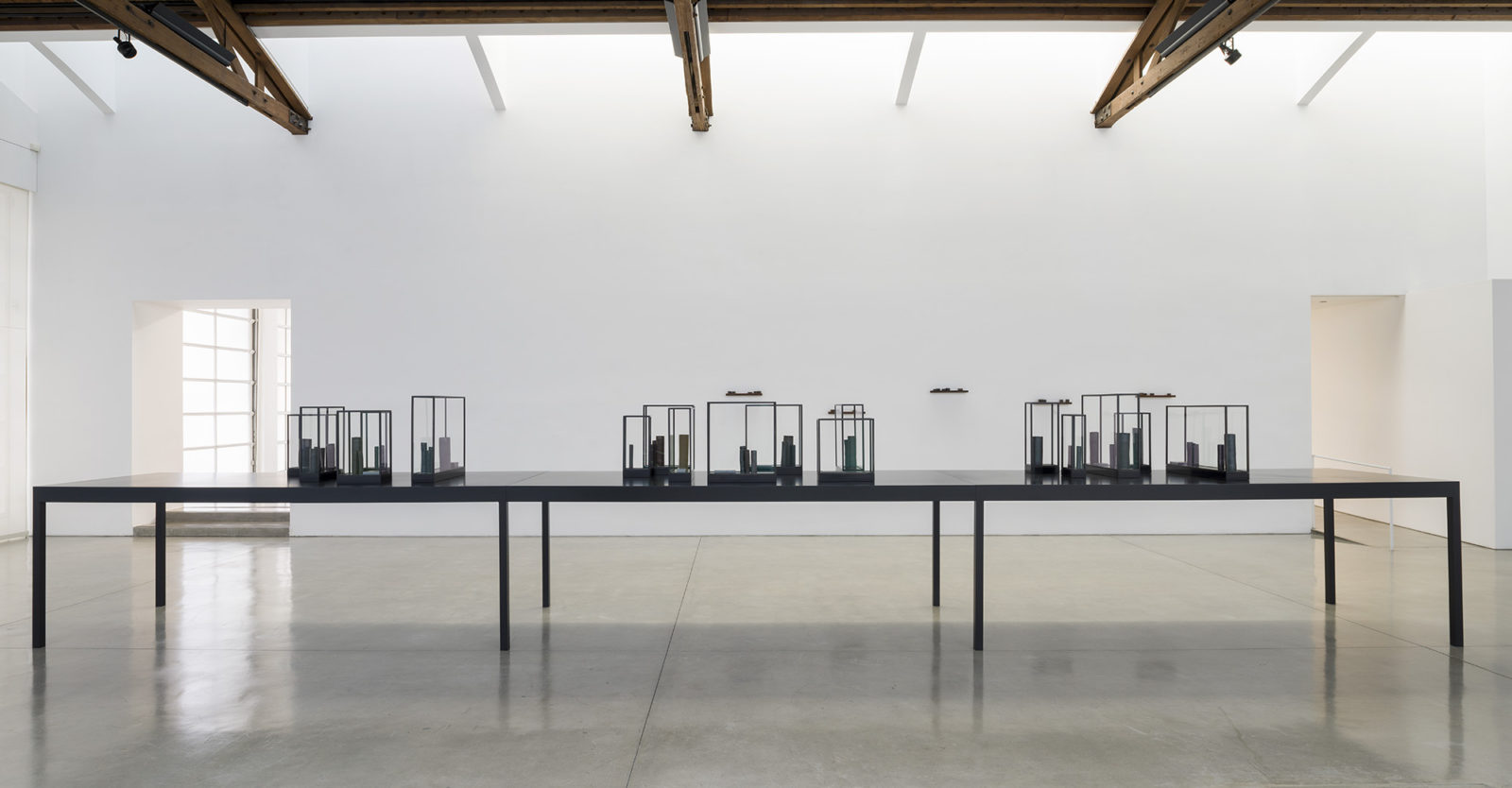
a new ground I-III, 2015
ten thousand things
Gagosian, Beverly Hills
14 January – 18 February 2016
At the heart of this exhibition with Gagosian, Beverly Hills, was a series of responses to the Schindler House, the revolutionary 1922 building by Viennese émigré architect, Rudolph Schindler, which was so influential on composer, theorist and writer, John Cage.
For this body of work, Edmund de Waal made a series of conversations about materials - porcelain, metal, plaster, wood and glass - with architectural space and the open, generous possibilities that Cage and Schindler offer. How people walk through spaces, how they encounter the works, how it is possible to make work to pause the world a little, is the imperative. At its core is one simple question: it is about what it means to belong in one place at one time.
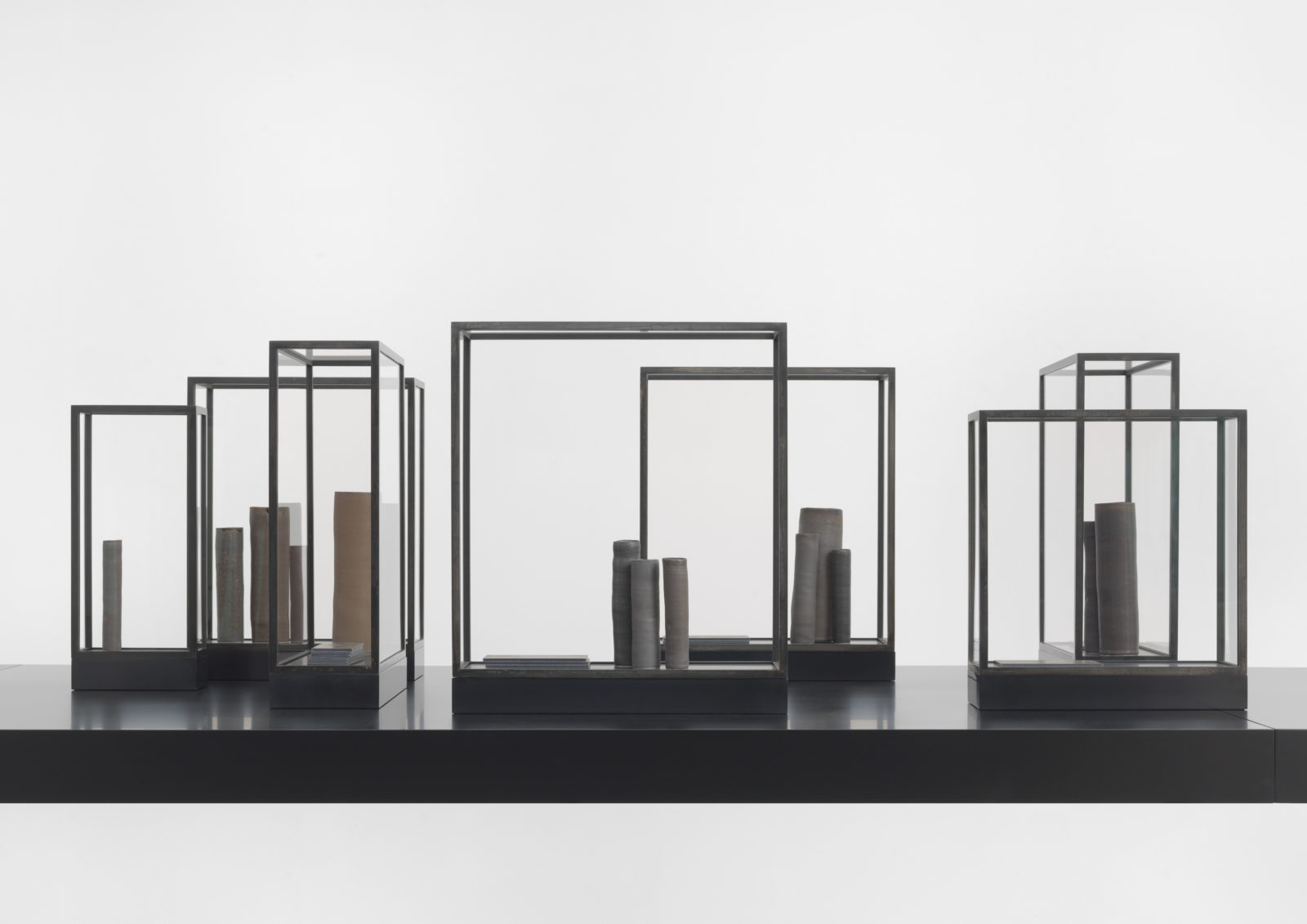
a new ground, II2016
13 porcelain vessels and Cor-Ten steel blocks in 7 steel, Corian, and plexiglass vitrines.
56 × 180 × 83.5 cm
ten thousand things
Gagosian, Beverly Hills
14 January – 18 February 2016
At the heart of this exhibition with Gagosian, Beverly Hills, was a series of responses to the Schindler House, the revolutionary 1922 building by Viennese émigré architect, Rudolph Schindler, which was so influential on composer, theorist and writer, John Cage.
For this body of work, Edmund de Waal made a series of conversations about materials - porcelain, metal, plaster, wood and glass - with architectural space and the open, generous possibilities that Cage and Schindler offer. How people walk through spaces, how they encounter the works, how it is possible to make work to pause the world a little, is the imperative. At its core is one simple question: it is about what it means to belong in one place at one time.
composition for three voices, 2015
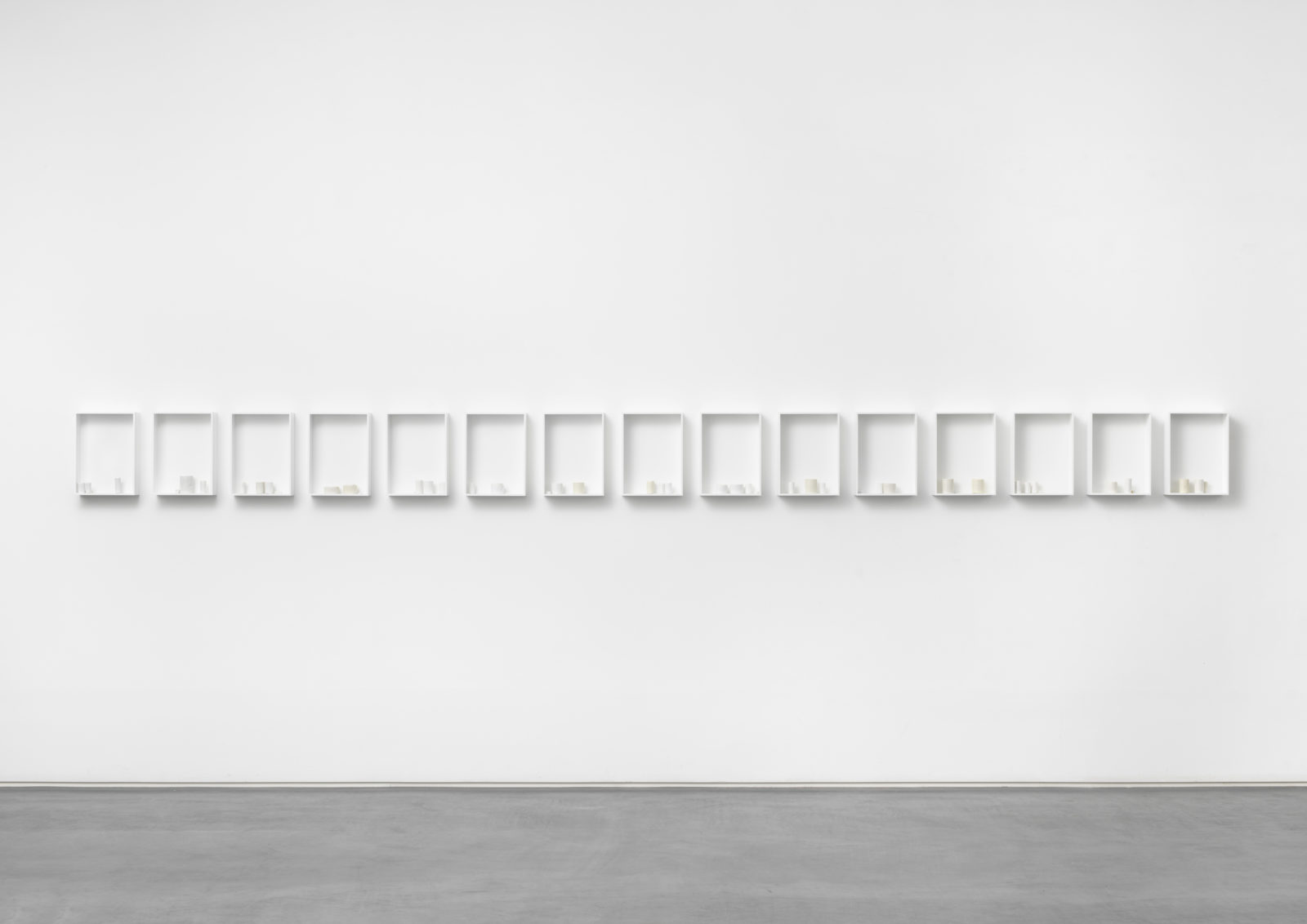
composition for three voices, 2015
45 porcelain vessels with painted and gilded lead blocks in 15 aluminium and plexiglass vitrines38 × 532 × 10 cm
ten thousand things
Gagosian, Beverly Hills
14 January – 18 February 2016
At the heart of this exhibition with Gagosian, Beverly Hills, was a series of responses to the Schindler House, the revolutionary 1922 building by Viennese émigré architect, Rudolph Schindler, which was so influential on composer, theorist and writer, John Cage.
For this body of work, Edmund de Waal made a series of conversations about materials - porcelain, metal, plaster, wood and glass - with architectural space and the open, generous possibilities that Cage and Schindler offer. How people walk through spaces, how they encounter the works, how it is possible to make work to pause the world a little, is the imperative. At its core is one simple question: it is about what it means to belong in one place at one time.
#835, 2015
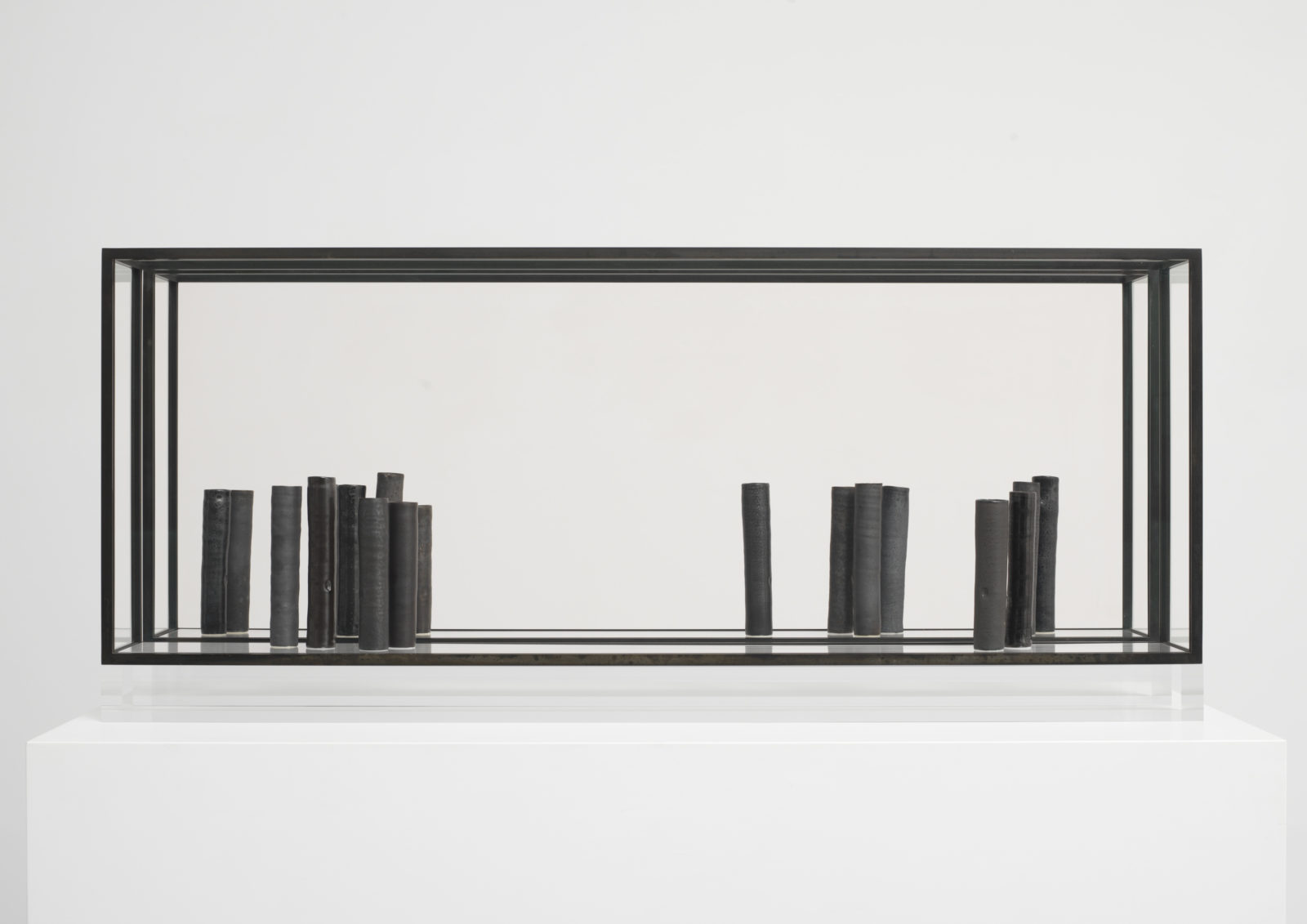
#835, 2015
18 porcelain vessels in 2 steel and plexiglass vitrines50 × 116 × 35 cm
ten thousand things
Gagosian, Beverly Hills
14 January – 18 February 2016
At the heart of this exhibition with Gagosian, Beverly Hills, was a series of responses to the Schindler House, the revolutionary 1922 building by Viennese émigré architect, Rudolph Schindler, which was so influential on composer, theorist and writer, John Cage.
For this body of work, Edmund de Waal made a series of conversations about materials - porcelain, metal, plaster, wood and glass - with architectural space and the open, generous possibilities that Cage and Schindler offer. How people walk through spaces, how they encounter the works, how it is possible to make work to pause the world a little, is the imperative. At its core is one simple question: it is about what it means to belong in one place at one time.
a word, a name a place, 2015; to speak to you, 2015; installation view
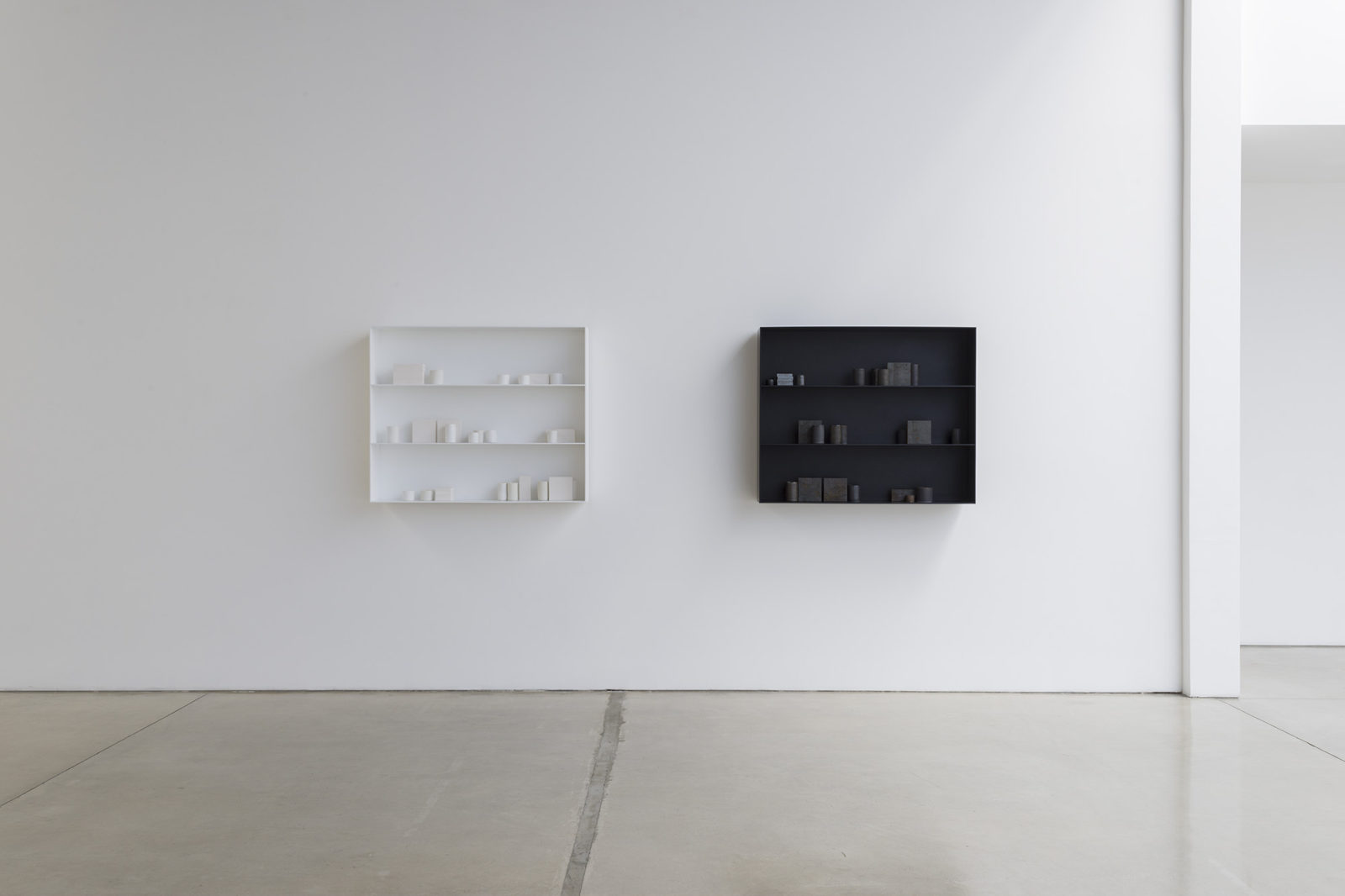
a word, a name a place, 2015; to speak to you, 2015; installation view
ten thousand things
Gagosian, Beverly Hills
14 January – 18 February 2016
At the heart of this exhibition with Gagosian, Beverly Hills, was a series of responses to the Schindler House, the revolutionary 1922 building by Viennese émigré architect, Rudolph Schindler, which was so influential on composer, theorist and writer, John Cage.
For this body of work, Edmund de Waal made a series of conversations about materials - porcelain, metal, plaster, wood and glass - with architectural space and the open, generous possibilities that Cage and Schindler offer. How people walk through spaces, how they encounter the works, how it is possible to make work to pause the world a little, is the imperative. At its core is one simple question: it is about what it means to belong in one place at one time.
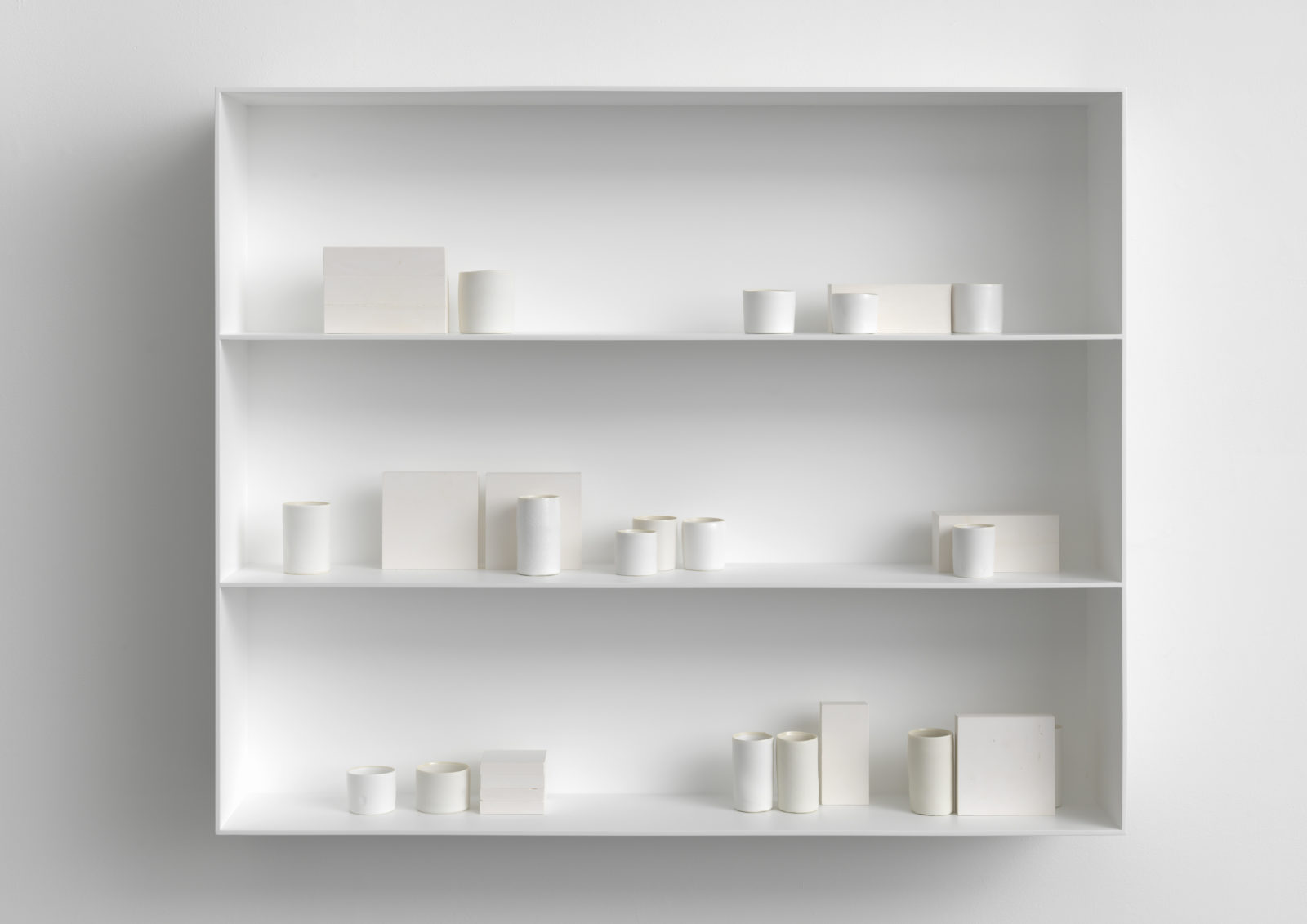
a word, a name, a place2016
16 porcelain vessels and 14 plaster blocks in aluminium cabinet.
50 × 116 × 15 cm
ten thousand things
Gagosian, Beverly Hills
14 January – 18 February 2016
At the heart of this exhibition with Gagosian, Beverly Hills, was a series of responses to the Schindler House, the revolutionary 1922 building by Viennese émigré architect, Rudolph Schindler, which was so influential on composer, theorist and writer, John Cage.
For this body of work, Edmund de Waal made a series of conversations about materials - porcelain, metal, plaster, wood and glass - with architectural space and the open, generous possibilities that Cage and Schindler offer. How people walk through spaces, how they encounter the works, how it is possible to make work to pause the world a little, is the imperative. At its core is one simple question: it is about what it means to belong in one place at one time.
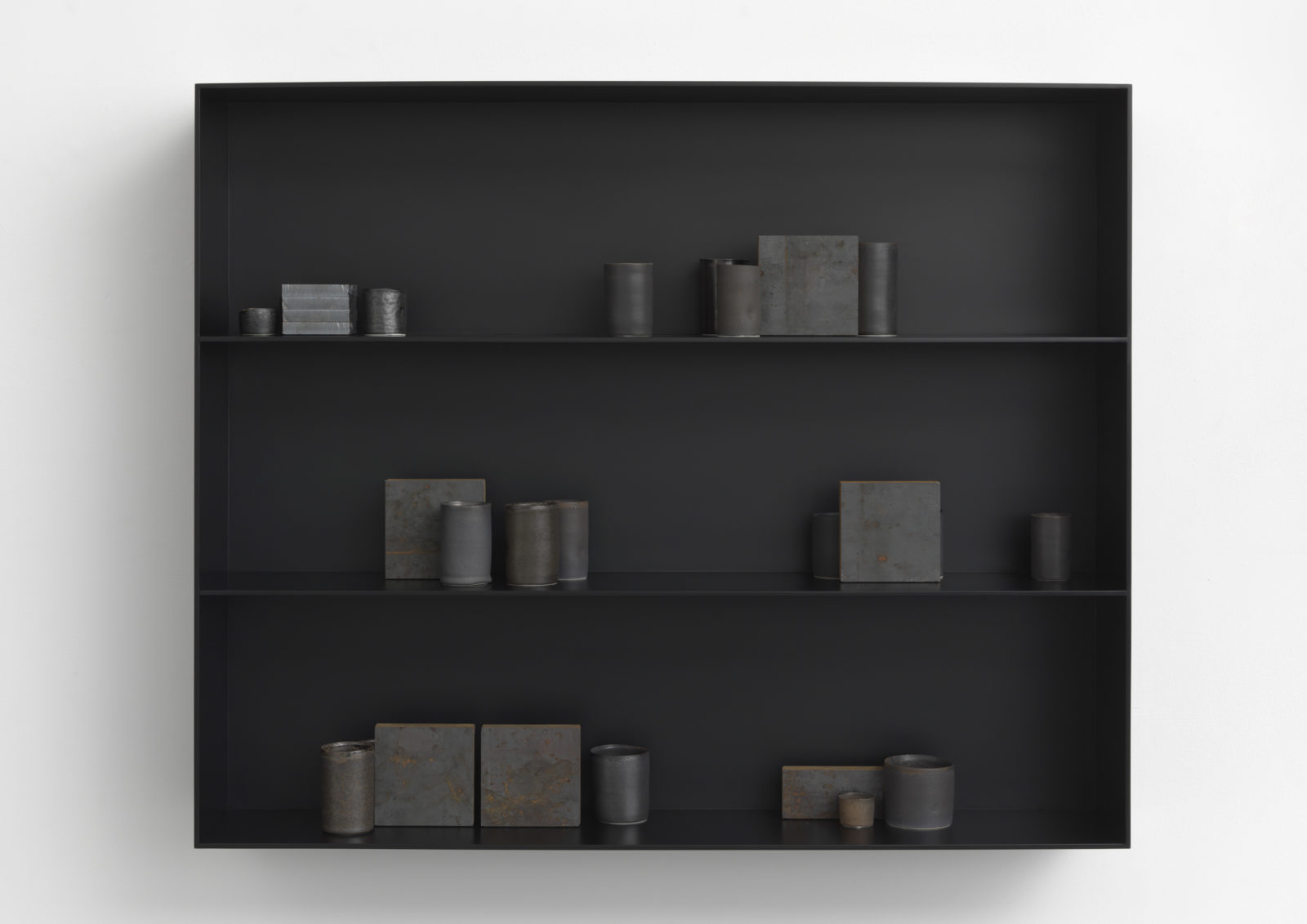
to speak to you2016
17 porcelain vessels and 10 Cor-Ten steel blocks in aluminium cabinet.
50 × 116 × 15 cm
ten thousand things
Gagosian, Beverly Hills
14 January – 18 February 2016
At the heart of this exhibition with Gagosian, Beverly Hills, was a series of responses to the Schindler House, the revolutionary 1922 building by Viennese émigré architect, Rudolph Schindler, which was so influential on composer, theorist and writer, John Cage.
For this body of work, Edmund de Waal made a series of conversations about materials - porcelain, metal, plaster, wood and glass - with architectural space and the open, generous possibilities that Cage and Schindler offer. How people walk through spaces, how they encounter the works, how it is possible to make work to pause the world a little, is the imperative. At its core is one simple question: it is about what it means to belong in one place at one time.
a word, a name, a place, 2015; to speak to you, 2015; the ten thousand things, for John Cage, 2015; installation view
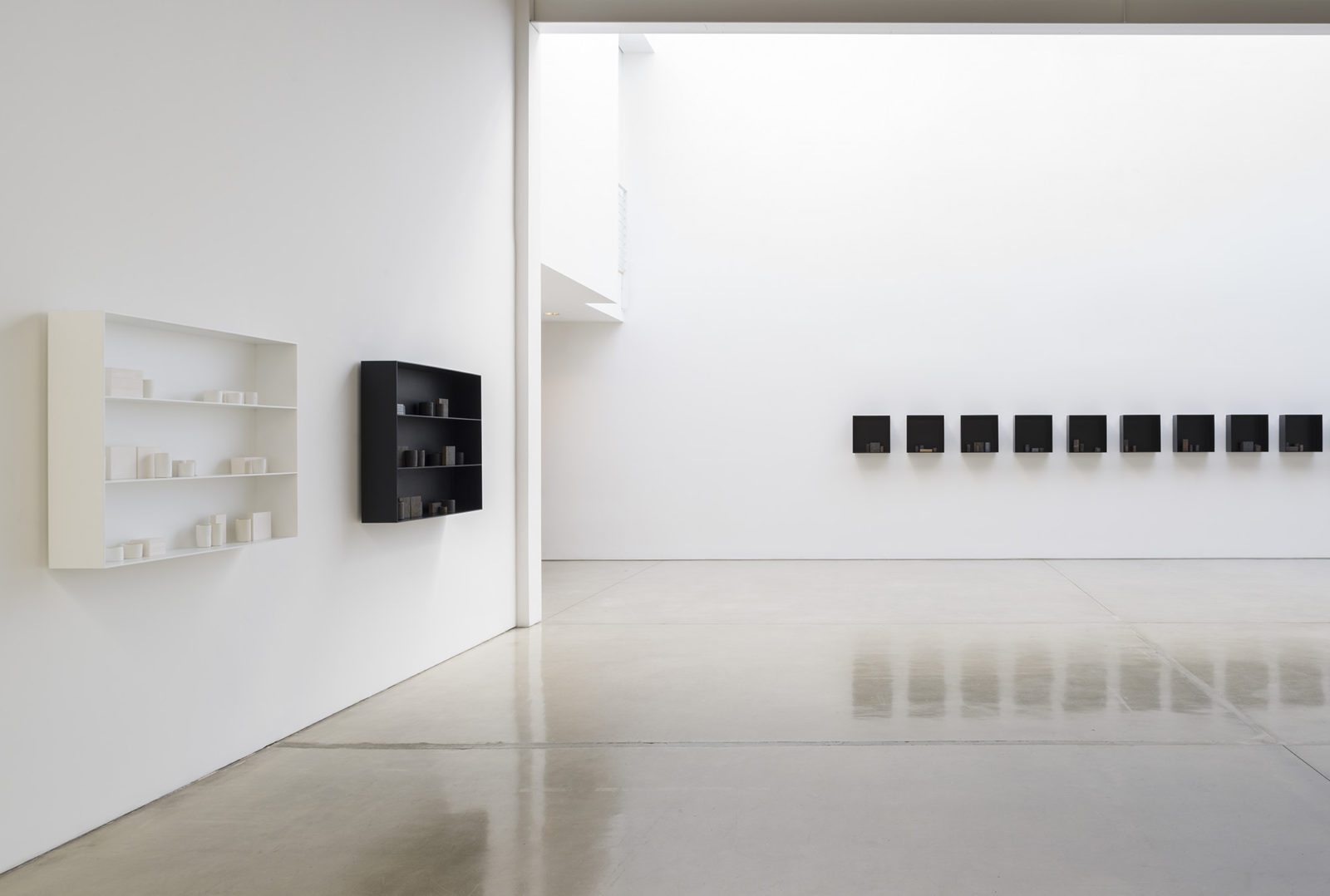
a word, a name, a place, 2015; to speak to you, 2015; the ten thousand things, for John Cage, 2015; installation view
ten thousand things
Gagosian, Beverly Hills
14 January – 18 February 2016
At the heart of this exhibition with Gagosian, Beverly Hills, was a series of responses to the Schindler House, the revolutionary 1922 building by Viennese émigré architect, Rudolph Schindler, which was so influential on composer, theorist and writer, John Cage.
For this body of work, Edmund de Waal made a series of conversations about materials - porcelain, metal, plaster, wood and glass - with architectural space and the open, generous possibilities that Cage and Schindler offer. How people walk through spaces, how they encounter the works, how it is possible to make work to pause the world a little, is the imperative. At its core is one simple question: it is about what it means to belong in one place at one time.
the ten thousand things, for John Cage; 2015, a new ground, 2016; installation view
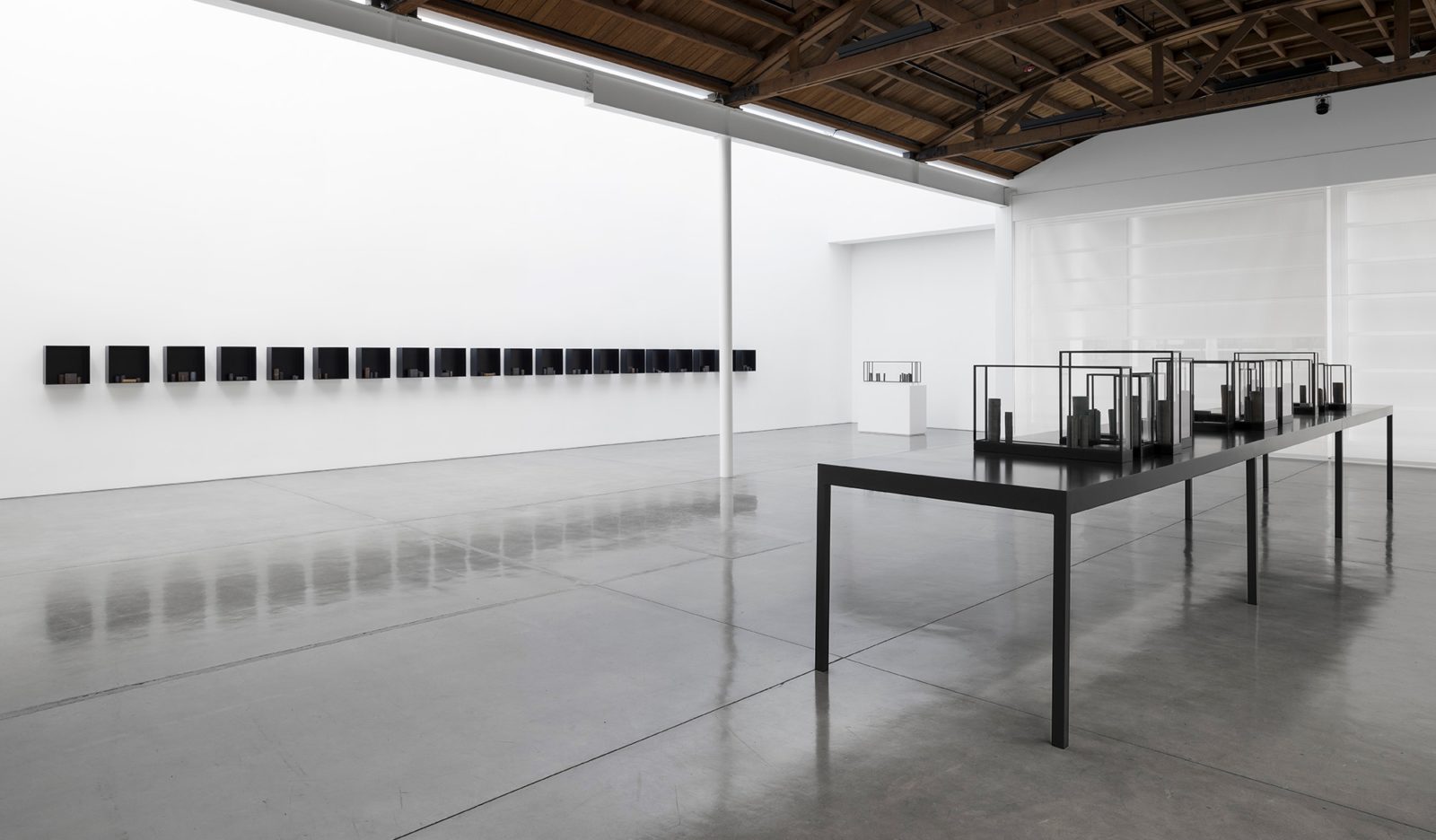
the ten thousand things, for John Cage; 2015, a new ground, 2016; installation view
ten thousand things
Gagosian, Beverly Hills
14 January – 18 February 2016
At the heart of this exhibition with Gagosian, Beverly Hills, was a series of responses to the Schindler House, the revolutionary 1922 building by Viennese émigré architect, Rudolph Schindler, which was so influential on composer, theorist and writer, John Cage.
For this body of work, Edmund de Waal made a series of conversations about materials - porcelain, metal, plaster, wood and glass - with architectural space and the open, generous possibilities that Cage and Schindler offer. How people walk through spaces, how they encounter the works, how it is possible to make work to pause the world a little, is the imperative. At its core is one simple question: it is about what it means to belong in one place at one time.
the ten thousand things, for John Cage, II, 2015
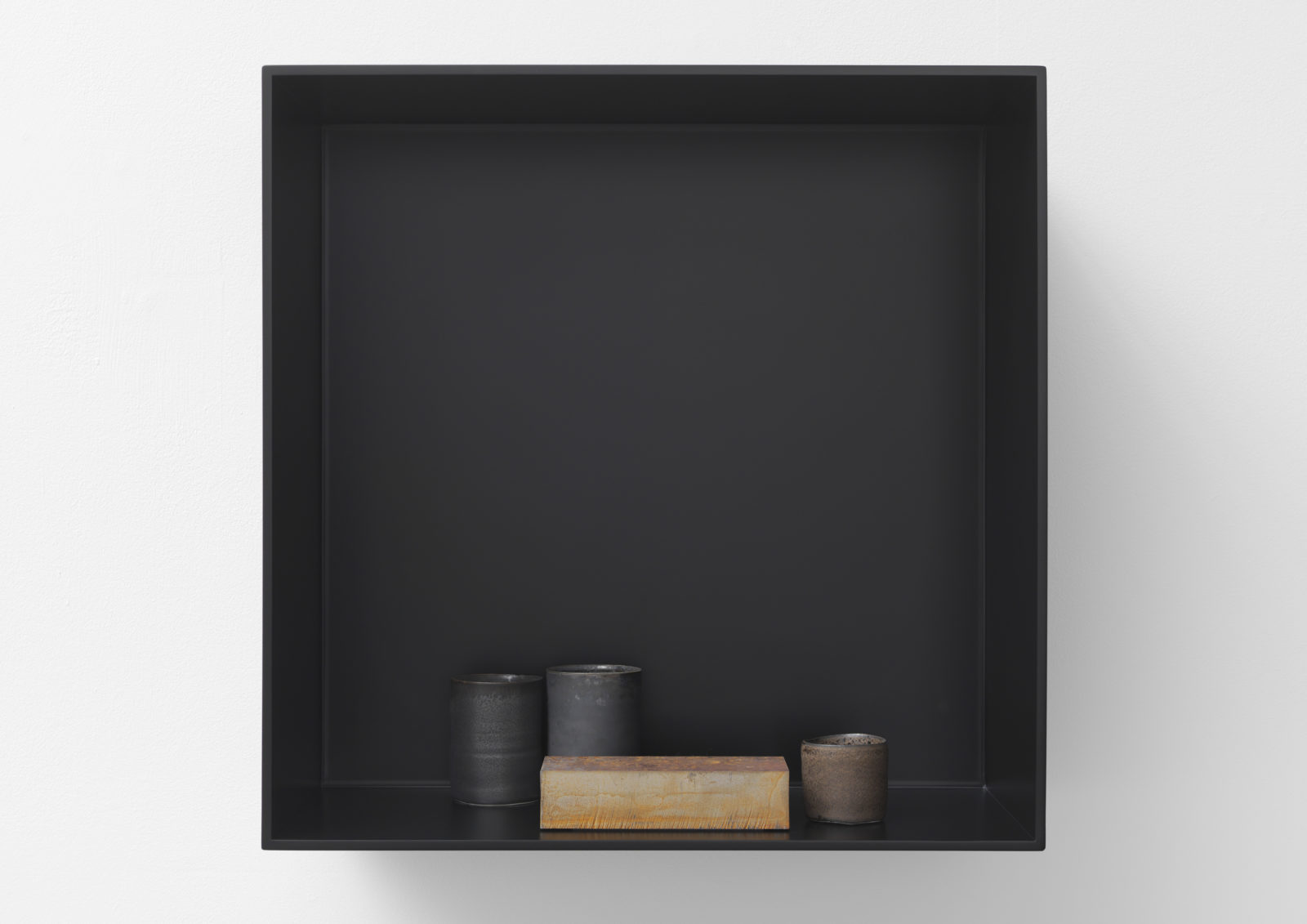
the ten thousand things, for John Cage, II, 2015
From a series of 20 pieces; 3 porcelain vessels and Cor-Ten steel block in aluminium box45 × 45 × 19 cm
ten thousand things
Gagosian, Beverly Hills
14 January – 18 February 2016
At the heart of this exhibition with Gagosian, Beverly Hills, was a series of responses to the Schindler House, the revolutionary 1922 building by Viennese émigré architect, Rudolph Schindler, which was so influential on composer, theorist and writer, John Cage.
For this body of work, Edmund de Waal made a series of conversations about materials - porcelain, metal, plaster, wood and glass - with architectural space and the open, generous possibilities that Cage and Schindler offer. How people walk through spaces, how they encounter the works, how it is possible to make work to pause the world a little, is the imperative. At its core is one simple question: it is about what it means to belong in one place at one time.
a new ground, 2016; two sounds, 2015; installation view
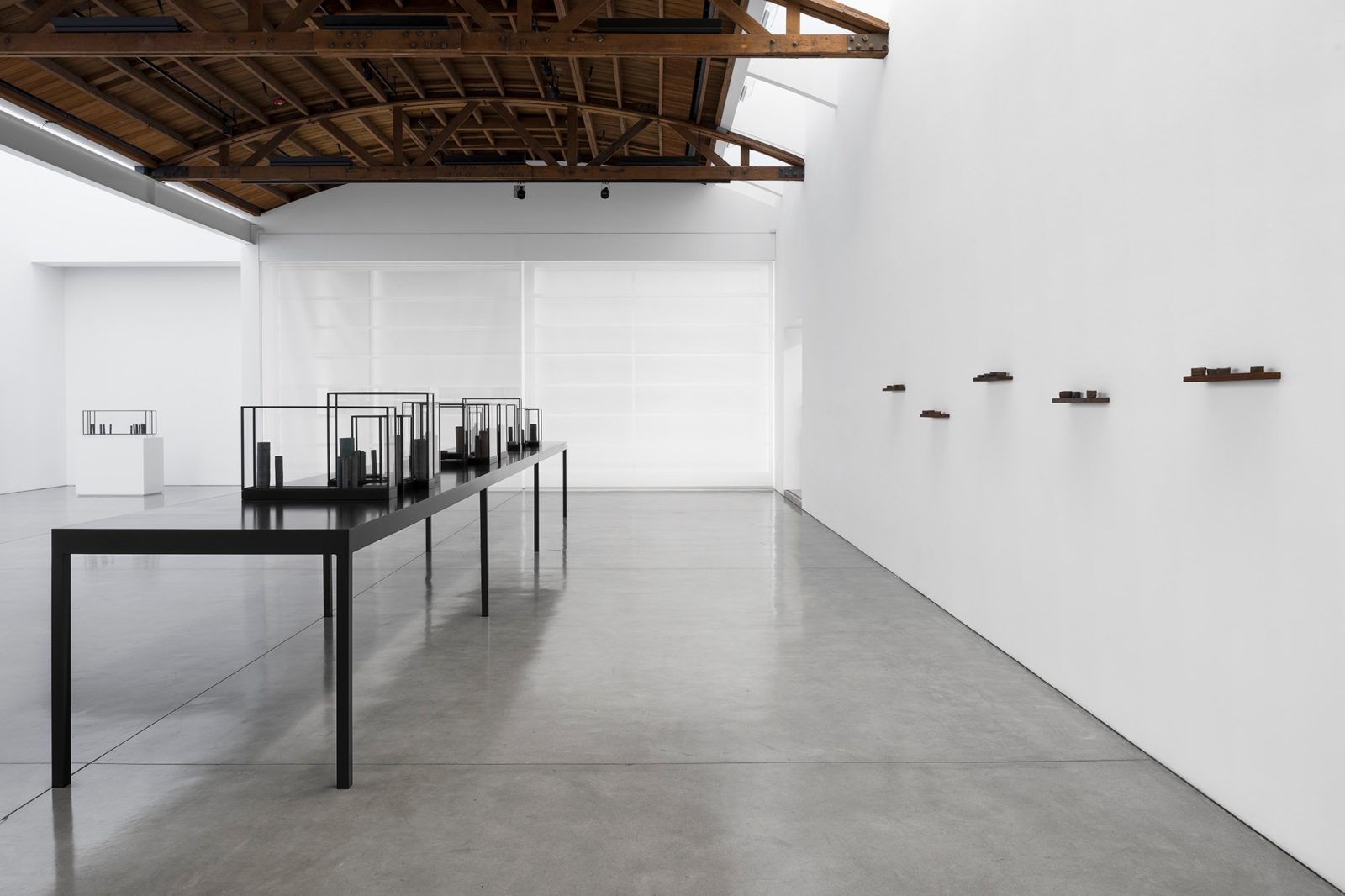
a new ground, 2016; two sounds, 2015; installation view
ten thousand things
Gagosian, Beverly Hills
14 January – 18 February 2016
At the heart of this exhibition with Gagosian, Beverly Hills, was a series of responses to the Schindler House, the revolutionary 1922 building by Viennese émigré architect, Rudolph Schindler, which was so influential on composer, theorist and writer, John Cage.
For this body of work, Edmund de Waal made a series of conversations about materials - porcelain, metal, plaster, wood and glass - with architectural space and the open, generous possibilities that Cage and Schindler offer. How people walk through spaces, how they encounter the works, how it is possible to make work to pause the world a little, is the imperative. At its core is one simple question: it is about what it means to belong in one place at one time.
two sounds, III, 2015
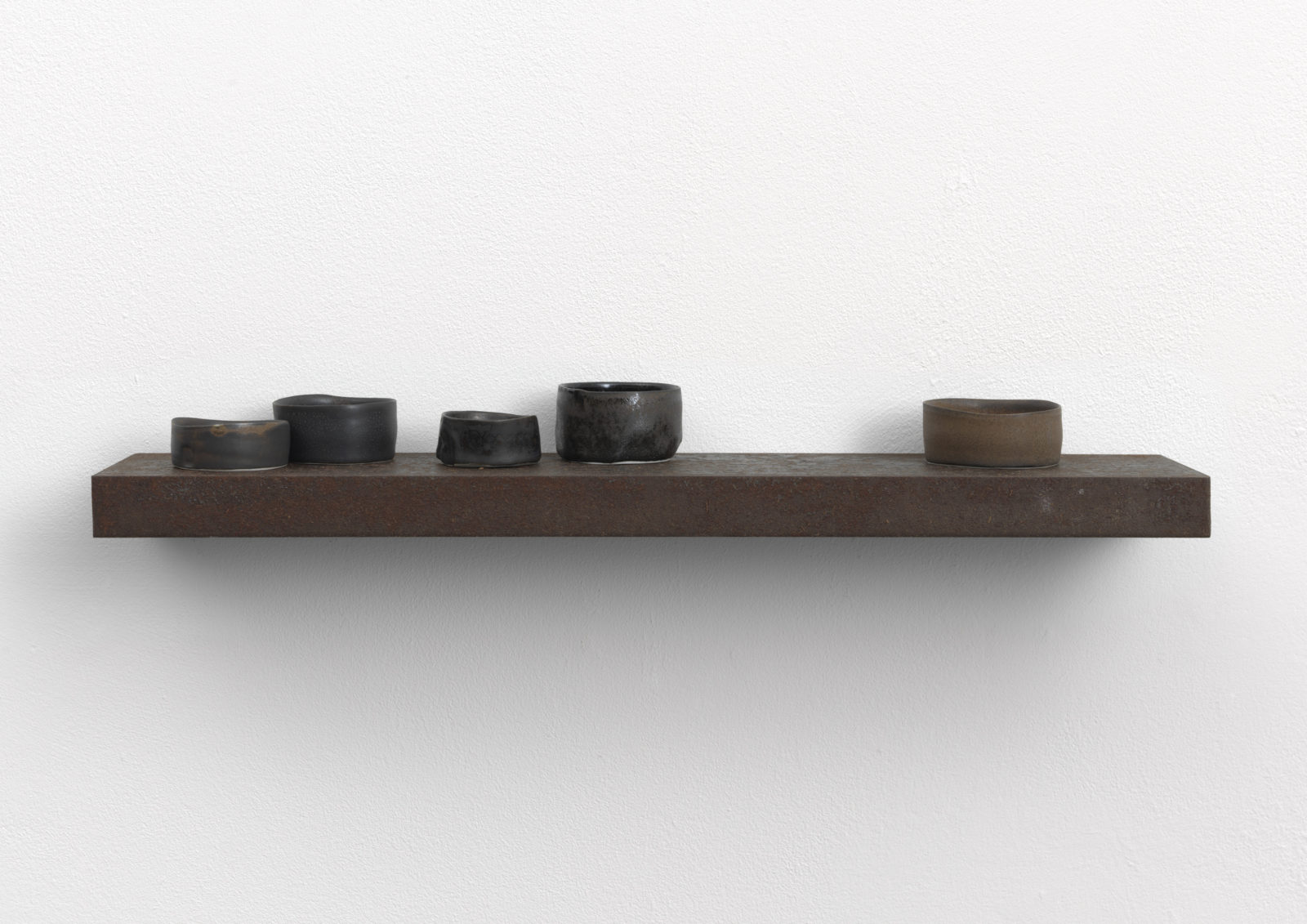
two sounds, III, 2015
5 porcelain vessels on Cor-Ten steel shelf2.4 × 45 × 10 cm
ten thousand things
Gagosian, Beverly Hills
14 January – 18 February 2016
At the heart of this exhibition with Gagosian, Beverly Hills, was a series of responses to the Schindler House, the revolutionary 1922 building by Viennese émigré architect, Rudolph Schindler, which was so influential on composer, theorist and writer, John Cage.
For this body of work, Edmund de Waal made a series of conversations about materials - porcelain, metal, plaster, wood and glass - with architectural space and the open, generous possibilities that Cage and Schindler offer. How people walk through spaces, how they encounter the works, how it is possible to make work to pause the world a little, is the imperative. At its core is one simple question: it is about what it means to belong in one place at one time.
